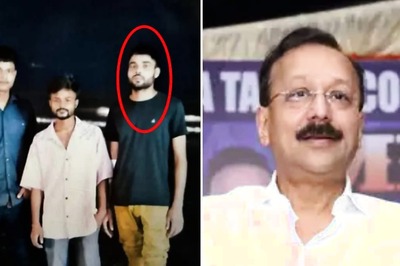
views
We all know the ability of any country to fight COVID-19 through vaccines depends on the strength and resilience of the pharma sector. But it turns out that the collective economic illiteracy of the bureaucracy is going to snatch defeat from the jaws of victory and the clumsy way in which vaccine production and distribution has been handled is proof.
The health secretary is clearly out of his depth in his job. His latest snafu is the utter cluelessness on the production and pricing restrictions on vaccine makers, claiming that only those who need it will get rather than those who want it. Added to this are the price and export controls which neither allow the manufacturers to ramp up production, nor generate sufficient profit to invest in ramping up of production.
There are several issues involved here. The first is that of prioritising “those in need”. The problem is vaccines are going unused because “those in need” are either not coming forward for vaccination or the demographics of each area have not been charted properly leading to localised oversupply and consequent wastage of the vaccines in question. However, even when such oversupply exists, there is no provision for “those who want it” for a variety of reasons, including work or travel that requires vaccination certificates. This is particularly problematic because large parts of those who want it are critical to the functioning of the economy or are economically vulnerable, and not allowing them to get vaccinated only puts them in a situation where they will have to take risks, increasing the chances of infection.
There could have been several solutions to this problem—to get manufacturers to dedicate 50 per cent of the production to “those in need” and distribute it through the government. Simultaneously, the manufacturers could have dedicated the remaining 50 per cent capacity for profit vaccination of “those who want” as well as for export at higher prices. This would have ensured enough capital flow to ramp up production rapidly and market forces would have incentivised such a ramp up. Importantly, it would have drastically accelerated the vaccination process, creating rapidly increasing pockets of herd immunity. Yet another question remains, why was the choice of vaccines narrowed down to just two, when a plethora of effective vaccines was available in the market and open to localised production agreements?
ALSO READ| What India Must Prioritize in COVID Era: Production of Bulk Drugs & Medical Devices, Vaccine Stockpiling
Mind you, this is not the first occasion when the mutual exclusivity of economics, medicine and common sense, which seems to plague the bureaucracy, has affected common people. The coronary stent fiasco should have acted as a sobering reminder that the entire medical and economic bureaucracy are prime exemplars of the Peter Principle. On that occasion, literally within months of imposing price caps on stents (ostensibly to “protect” local manufacturers who already accounted for 60 per cent of local usage), hospitals saw a shortage of stents, leading to a black economy for their supply, sharp price rises and hospital hiking the cost of procedure to compensate for the losses incurred in acquisition.
This is not science—this is simple economics and common sense. The question remains who were the decision-makers who provided such consistently abysmal advice to the government, on what basis, and what kind of statistical and economic projections are being done to hold such advice up to scrutiny and account?
To fall back on “the WHO said so” is particularly lazy, given how consistently the nepotistic circle who monopolise the top jobs at the organisation consistently failed—be it in early warning, be it in finding patient zero, be it in early advisories on not wearing masks tweeted out by the director himself. Obviously, India is not unique in having a clueless bureaucracy. Dr Fauci in the US went on national TV asking people not to wear masks before executing a full 180 degree-turn on advocating mask usage with a fanaticism that matched his earlier fanaticism in denouncing masks for everyone. However, if the US response to COVID-19 was heavily politicised and gravely undermined by deliberate falsification of information and personal political agenda pushing, the Indian response thankfully was free of that –at least, at the institutional level.
ALSO READ| The Curious Case of Maharashtra: Why It Is So Vulnerable to Surges of COVID Infections
To sum up, the bureaucracy—medical and generalist— have created a cyclic failure chain at every single point of production. Their “collective wisdom” has ensured shortages in supplying the population as a whole, localised oversupply in certain pockets, lack of financial viability leading to an inability to ramp up production; and all this while India is exporting vaccines for some temporary ephemeral “goodwill” that exacerbates the low volume production. The situation is not dissimilar to China’s under Mao Tse-tung, who was exporting grain to East Germany at rock bottom prices while a massive famine was killing millions of Chinese. This is not a return to inefficient licence raj as some have put—rather it is a disastrous move towards Stalinist- and Maoist-style command economies. At some point now, someone has to crack the whip, understand the cognitive limits of single exam pass Einsteins, and hold these bureaucrats accountable.
Read all the Latest News, Breaking News and Coronavirus News here. Follow us on Facebook, Twitter and Telegram.




















Comments
0 comment